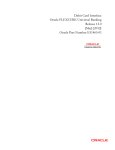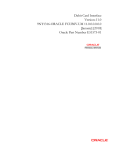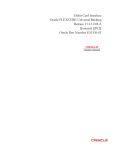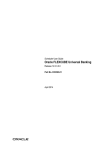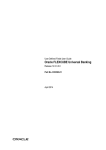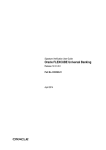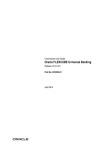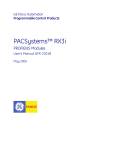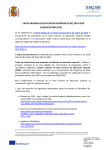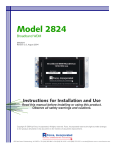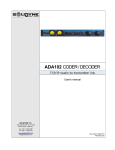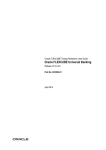Download Debit Card Interface User Manual
Transcript
Debit Card Interface User Guide Oracle FLEXCUBE Universal Banking Release 12.0.3.0.0 Part No. E53393-01 April 2014 Debit Card Interface User Guide April 2014 Oracle Financial Services Software Limited Oracle Park Off Western Express Highway Goregaon (East) Mumbai, Maharashtra 400 063 India Worldwide Inquiries: Phone: +91 22 6718 3000 Fax:+91 22 6718 3001 www.oracle.com/financialservices/ Copyright © 2007, 2014, Oracle and/or its affiliates. All rights reserved. Oracle and Java are registered trademarks of Oracle and/or its affiliates. Other names may be trademarks of their respective owners. U.S. GOVERNMENT END USERS: Oracle programs, including any operating system, integrated software, any programs installed on the hardware, and/or documentation, delivered to U.S. Government end users are "commercial computer software" pursuant to the applicable Federal Acquisition Regulation and agency-specific supplemental regulations. As such, use, duplication, disclosure, modification, and adaptation of the programs, including any operating system, integrated software, any programs installed on the hardware, and/or documentation, shall be subject to license terms and license restrictions applicable to the programs. No other rights are granted to the U.S. Government. This software or hardware is developed for general use in a variety of information management applications. It is not developed or intended for use in any inherently dangerous applications, including applications that may create a risk of personal injury. If you use this software or hardware in dangerous applications, then you shall be responsible to take all appropriate failsafe, backup, redundancy, and other measures to ensure its safe use. Oracle Corporation and its affiliates disclaim any liability for any damages caused by use of this software or hardware in dangerous applications. This software and related documentation are provided under a license agreement containing restrictions on use and disclosure and are protected by intellectual property laws. Except as expressly permitted in your license agreement or allowed by law, you may not use, copy, reproduce, translate, broadcast, modify, license, transmit, distribute, exhibit, perform, publish or display any part, in any form, or by any means. Reverse engineering, disassembly, or decompilation of this software, unless required by law for interoperability, is prohibited. The information contained herein is subject to change without notice and is not warranted to be error-free. If you find any errors, please report them to us in writing. This software or hardware and documentation may provide access to or information on content, products and services from third parties. Oracle Corporation and its affiliates are not responsible for and expressly disclaim all warranties of any kind with respect to third-party content, products, and services. Oracle Corporation and its affiliates will not be responsible for any loss, costs, or damages incurred due to your access to or use of third-party content, products, or services. Contents 1. Preface ...................................................................................................... 1-1 1.1 1.2 1.3 1.4 1.5 1.6 1.7 2. Introduction.............................................................................................................. Audience.................................................................................................................. Documentation Accessibility.................................................................................... Organization ............................................................................................................ Abbreviations........................................................................................................... Glossary of Icons..................................................................................................... Related Documents ................................................................................................. 1-1 1-1 1-1 1-1 1-2 1-2 1-2 Debit Card Interface ................................................................................. 2-1 2.1 2.2 2.3 2.4 2.5 2.6 2.7 2.8 Introduction.............................................................................................................. 2-1 Process Flow ........................................................................................................... 2-1 Maintaining Card BIN ............................................................................................. 2-2 Maintaining Card Type ............................................................................................ 2-5 Maintaining Debit Card Products ............................................................................ 2-6 Maintaining Card Status Details .............................................................................. 2-7 Maintaining Card Customer..................................................................................... 2-8 Maintaining Card Accounts...................................................................................... 2-9 2.8.1 Viewing Cards Summary ............................................................................ 2-9 2.9 Maintaining Card Master Details ........................................................................... 2-10 2.10 Generating Card Handoff Files ............................................................................. 2-14 2.10.1 File Format ............................................................................................... 2-15 2.10.2 Uploading Card Status Details ................................................................. 2-17 3. Function ID Glossary ............................................................................... 3-1 1. Preface 1.1 Introduction This manual is designed to help acquaint you with the interface between Oracle FLEXCUBE and the other systems within your bank. This manual provides you extensive explanations about the various maintenances required for the smooth exchange of data between Oracle FLEXCUBE and the applicable systems through the interface. It also gives you an insight into the processes involved in the actual exchange of data. 1.2 Audience This manual is intended for the following User/User Roles. 1.3 Role Function Back office clerk Input functions for contracts Back office managers/officers Authorization functions Product Managers Product definition and authorization End of day operators Processing during end of day/ beginning of day Financial Controller / Product Managers Generation of reports Documentation Accessibility For information about Oracle's commitment to accessibility, visit the Oracle Accessibility Program website at http://www.oracle.com/pls/topic/lookup?ctx=acc&id=docacc. 1.4 Organization This manual is organized as follows: Chapter 1 About this Manual gives information on the intended audience. It also lists the various chapters covered in this User Manual. Chapter 2 Debit Card Interface explains the process of capturing debit card transactions originating from Automatic Teller Machines (ATM) and POS terminals attached to different branches of your bank. Chapter 3 Function ID Glossary has alphabetical listing of Function/Screen ID's used in the module with page references for quick navigation. 1-1 1.5 1.6 Abbreviations Abbreviation Description System Unless and otherwise specified, it shall always refer to Oracle FLEXCUBE system EOD End Of Day CMS Card Management System BIN Bank Identification Number Glossary of Icons This User Manual may refer to all or some of the following icons. Icons Function Exit Add row Delete row Option List 1.7 Related Documents Procedures User Manual 1-2 2. Debit Card Interface 2.1 Introduction Oracle FLEXCUBE facilitates the processing of debit card transactions originating from Automatic Teller Machines (ATM) and POS terminals attached to different branches of your bank. You will be allowed to capture different types of debit cards in Oracle FLEXCUBE. The cards are linked to individual customer accounts. You need to do the following maintenance in Oracle FLEXCUBE for the debit card interface to work: 2.2 Card BIN Maintenance: Card BIN maintenance should be created for every issuer product that the bank wishes to provide to customers. These BINs would be provided to bank typically by networks like VISA/MasterCard or by ISO organization. ATM and POS transaction count and amount limits are maintained for every BIN in this maintenance Card Type Maintenance: Card Types should be created to uniquely identify the set of Issuer BINs maintained. For example Visa might issue 433333 and 422222 under ‘Classic’ type and 455555 and 466666 under ‘Gold type’ etc. Card Product Maintenance: Card product maintenance is to link a given card type to a card product. You are not able to link multiple card types to same card products. Card products are linked in Debit Card Product Maintenance to uniquely identify the card nature that is requested. Card Status Maintenance: Card status has to be defined as card applied, closed, card issued, activated, and blocked. Card Customers Maintenance: Card customer should be maintained. Card Accounts Maintenance: This maintenance is required for creating the customer account who wishes to avail the card. Card Requests Maintenance: This is the master table which stores the card request and further life cycle details. Process Flow The following flow diagram depicts the working of the Debit Card Interface: 2-1 start Define Card Bins with Limits Define Card Customers Define Card Types Define Card Status Define Card Accounts Define Card Products Create Debit Card Request Maintenance Card Bin ,Type, Product, Limits, Customer, Account, Status Card Status Query Card Production Handoff File Card Status Update 2.3 Maintaining Card BIN You have to create Card BIN maintenance for every issuer product that the bank wishes to provide to customers. You can maintain the details of the card BIN in the 'Card BIN Maintenance' screen. You can invoke the 'Card BIN Maintenance' screen by typing 'STDBINMT' in the field at the top right corner of the Application tool bar and clicking the adjoining arrow button. 2-2 Specify the following details in this screen: Card BIN Specify the Bank Identification Number (BIN). Description Specify the description of the BIN. Bank Institution Id Specify the bank institution code. Default Renewal Unit Select the default renewal unit of the cards issued under the card BIN from the drop-down list. This list displays the following values: Year Month Week Day Default Renewal Cycle Specify the default renewal unit value of the cards issued under the card BIN. Example To indicate that the card should be renewed after every 2 Years when the Default Renewal Unit is Yearly, you have to specify the Default Renewal Cycle as 2. ATM Limit Specify the following details pertaining to ATM limit: ATM Limit Unit Select the unit of ATM Limit count for transactions control from the drop-down list. This list displays the following values: 2-3 Year Month Week Day ATM Count Limit Specify the number of ATM transactions allowed for the unit defined for ATM. ATM Amount Limit Specify the maximum permissible amount for the unit defined for ATM. Example Specify 1000 to indicate 1000 account currency per unit. Remote ATM Limit Unit Select the unit of ATM Limit count for transactions control, for transactions done from ATMs outside the bank network, from the adjoining drop-down list. This list displays the following values: Year Month Week Day Remote transaction means transactions done outside the bank network. For example, an ATM transaction done in ICICI ATM using CITIBANK debit card. Remote ATM Count Limit Specify the number of ATM transactions allowed for the unit defined for remote ATM. Remote ATM Amount Limit Specify maximum permissible amount for the unit defined for remote ATM. Example Specify 1000 to indicate 1000 account currency per unit. POS Limit Specify the following details pertaining to POS limit: POS Limit Unit Select the unit of POS Limit count for transactions control from the drop-down list. This list displays the following values: Year Month Week Day POS Count Limit Specify the number of POS transactions allowed for the unit defined for POS. POS Amount Limit Specify the maximum permissible amount for the unit defined for POS. 2-4 Example Specify 1000 to indicate 1000 account currency per unit. Remote POS Limit Unit Select the unit of POS Limit count for transactions control from the drop-down list. This list displays the following values: Year Month Week Day Remote POS Count Limit Specify the number of transactions allowed from a remote POS. Remote POS Amount Limit Specify maximum permissible amount for the unit defined for remote POS. Example Specify 1000 to indicate 1000 account currency per unit. 2.4 Maintaining Card Type You can maintain the card type in the 'Card Type Maintenance' screen. You can invoke the 'Card Type Maintenance' screen by typing 'STDTYMNT' in the field at the top right corner of the Application tool bar and clicking the adjoining arrow button. Specify the following details in this screen: Card Type Specify the type of the card. Description Specify the description of the Card type. 2-5 BIN Details Specify the BIN details here: Card BIN Select the BIN for the card issued from the option list. You can associate multiple BINs to the same card type. 2.5 Maintaining Debit Card Products You can maintain debit card product in the 'Debit Card Product Maintenance' screen. This screen links a given card type to a card product (one to one). You are not allowed to link multiple card types to same card products. Card products are linked to uniquely identify the card nature that is requested. You can invoke the 'Debit Card Product Maintenance' screen by typing 'STDCPROD' in the field at the top right corner of the Application tool bar and clicking the adjoining arrow button. Specify the following details in this screen: Card Product Specify the Product Code. Description Specify the description of the specified Card product. Card Type Specify the type of Card allowed for the card product. Expiry Date Specify the date after which the card product cannot be used. Debit/Credit Card Select the type of the card. 2-6 GL Account Specify the GL account for the card from the adjoining option list. The option list displays all the GL accounts maintained in the system. Choose the appropriate one. Offset Account Specify the offset account for the card from the adjoining option list. The option list displays all the offset accounts maintained in the system. Choose the appropriate one. Transaction Code Specify the transaction code for the card from the adjoining option list. The option list displays all the transaction codes maintained in the system. Choose the appropriate one. Other Transaction Code Specify the other transaction code for the card from the adjoining option list. The option list displays all the transaction codes maintained in the system. Choose the appropriate one. 2.6 Maintaining Card Status Details You can maintain the card status in line with the Card Management System in the 'Card Status' screen. You can invoke the 'Card Status' screen by typing 'STDSTATM' in the field at the top right corner of the Application tool bar and clicking the adjoining arrow button. Specify the following details in this screen: Card Status Specify the status of the card. Initially, when the request for the card is initiated, the card status will be ‘Card applied’. Later you can change this to any status depending upon the need. The card status can be of the following: R – Specify 'R' to indicate the status as Requested A- Specify 'A' to indicate the status as Activated C- Specify 'C' to indicate the status as Closed Card Issued when the card is sent with PIN and physical card 2-7 B - Specify 'B' to indicate the status as Blocked These codes are factory-shipped codes and can be modified at the time of implementation based on the Card Management System used by your bank. Description Specify a description for the status. 2.7 Maintaining Card Customer You can maintain the card customer in the 'Card Customer Maintenance' screen. You can invoke the 'Card Customer Maintenance'screen by typing ' STDCUSTM' in the field at the top right corner of the Application tool bar and clicking the adjoining arrow button. Specify the following details in this screen: Branch Code The branch code gets defaulted here. Customer ID Select the customer ID from the adjoining option list. The option list displays all the customers maintained in the system. Customer Name The customer name gets displayed, on selecting the customer id. However, you are allowed to change the customer name. Based on this the customer name will appear in the card master screen. If Card Management System needs extra fields, the same can be maintained as UDFs using this screen. Click the ‘UDF’ button to maintain User Defined Fields for the CMS. System validates the following: if any card customer is open at customer closure level – if any card customer is open that card customer needs to be closed before customer closure. 2-8 2.8 if any card customer is closed during customer reopen – if the customer is closed, system will not allow the card customer to be reopened. Maintaining Card Accounts You can maintain the customer accounts which can be linked to cards in the 'Card Accounts Detail' screen. Also you can view the various cards attached to the same account using this screen. You can invoke the 'Card Accounts Detail' screen by typing 'STDCARDA' in the field at the top right corner of the Application tool bar and clicking the adjoining arrow button. Specify the following details in this screen: Branch Code Specify the branch code. Customer ID Select the Customer ID from the option list. Customer Account Number Select the customer account number from the option list. 2.8.1 Viewing Cards Summary In query mode, you can click 'Cards' button to see the summary of the cards related to the account. 2-9 If Card Management System needs extra fields, the same can be maintained as UDFs using the ‘Fields’ screen. Click ‘Fields’ Button to invoke the ‘Fields’ screen. System validates the following: 2.9 if any card customer is open at customer closure level – if any card customer is open that card customer needs to be closed before customer closure. if any card customer is closed during customer reopen – if the customer is closed, system will not allow the card customer to be reopened. Maintaining Card Master Details The life-cycle of the card is maintained using the 'Card Master Maintenance' screen, right from raising card request to the card expiry/renewal. You can invoke the 'Card Master Maintenance' screen by typing 'STDCRDMSSTDCRDMSSTDCRDMS' in the field at the top right corner of the Application tool bar and clicking the adjoining arrow button. This is the master table which stores the card request and further life cycle details. This screen is used for the following: To create new card requests To amend the card status manually( or through online upload ) To query the Card to accounts / Account to Cards linkages by Oracle FLEXCUBE To generate the hand off file (new card requests) To generate the renewal file 2-10 Specify the following details: Branch Code Branch code gets defaulted to current branch. Card Product Specify the product code of the card. Request Reference Number This is a system generated number.This reference number is used while doing updates based on response from CMS. Customer No Specify the customer number in case of request/renewal. Account No Specify the Customer Account Number. It is validated against the customer account marked with ‘ATM Facility’. Card BIN Select the Card BIN from the option list. Customer As part of specifying the details pertaining to customer, you can specify the following: Name on Card Customer name gets displayed as maintained in ‘Card Customer Maintenance’ screen. However, you are allowed to modify it. 2-11 Owner ID Type Specify the type of ID produced. For example, PAN, Passport, DL etc. Owner ID Number Specify the identification number of the applicant. Additional Holder ID Type Specify the type of ID produced by additional holder. For example, PAN, Passport, DL etc. Additional Holder ID Number Specify the Identification Number of the additional holder. Recovery Account Specify the recovery account here. Additional Holder Date of Birth Specify the date of birth of the additional holder from the adjoining calendar. Additional Holder Relation Specify the relation of the additional holder with the card holder. Card As part of specifying the card details, you can specify the following: Primary Card No In case of Secondary Cards, system displays the Primary Card Number here. Card Number It is generated by CMS when the mode is Request/renewal. However, you are allowed to specify the card number. Card Sequence Number Card Sequence Number is generated and displayed by the system. It is the running number 1.2.3…. Primary Card By default, system considers the first Debit Card issued for an account as the primary card and hence checks this box. You are not allowed to change the same. System unchecks this box on subsequent card issued for the same customer account. Card Application Date Specify the date of card application. Card Issued Date Specify the date of issue of the card. Card Renewal Date The date of renewal of the card gets defaulted from the BIN level. Card Expiry Date Specify the expiry date of the card. 2-12 Card Activation Date Specify the date of activation of the card. Issuer Specify the name of the issuer. Plastic Type Specify the card type here. Credit Card Limit Specify the credit limit for the customer. Status As part of the specifying the satus, you can specify the following: Card Dispatch Status Select the Dispatch Status from the drop-down list to indicate whether the card has been dispatched or not. Pin Mailed Status Select the PIN Mailed Status from the drop-down list to indicate whether PIN has been mailed to the cardholder or not. Card Status Specify the status of the card e.g. Active/Blocked etc. Last Status Change Date Specify the date of last status change. Last Operation Specify the last operation done on card. Delivery Channel for Card Specify the delivery channel for the card dispatch. Delivery Channel for PIN Specify the delivery channel for the PIN. Note Delivery channel for Card and PIN should be different. Renewal As part of the details pertaining to renewal, you can specify the following: Remarks Specify comments, if any. Renewal Unit Renewal unit gets defaulted here. Renewal Cycle Renewal cycle gets defaulted here. 2-13 Bill Cycle ATM The following details are displayed: ATM Limit Unit ATM Limit Unit gets defaulted from BIN. ATM Count Limit ATM Count Unit gets defaulted from BIN. AMT Amount Limit AMT Amount Unit gets defaulted from BIN. Remote ATM Limit Unit Remote transactions allowed through ATM unit gets defaulted. Remote ATM Count Limit Remote transactions unit allowed through ATM gets defaulted. Remote ATM Amount Limit Remote transactions allowed amount through ATM gets defaulted. POS The following details are displayed: POS Limit Unit POS Limit Unit gets defaulted from BIN POS Count Limit POS Count Unit gets defaulted from BIN POS Amount Limit POS Amount Unit gets defaulted from BIN Remote POS Limit Unit Remote transactions allowed through POS unit gets defaulted. Remote POS Count Limit Remote transactions unit allowed through POS gets defaulted. Remote POS Amount Limit Remote transactions allowed amount through POS gets defaulted. 2.10 Generating Card Handoff Files You can generate handoff files in Card Info handoff file format using the 'Card Handoff Batch' screen. You can invoke the 'Card Handoff Batch' screen by typing 'DCDBATCH' in the field at the top right corner of the Application tool bar and clicking the adjoining arrow button. This batch can be configured as either ad-hoc run or EOD run. It generates the 'Oracle FLEXCUBE Specific CMS Handoff Format'. 2-14 Click ‘Run’ button in this screen to run the handoff batch. 2.10.1 File Format The format of the hand off file generated is broadly structured as given below: Request 1 – <Customer record >CRLF – <Account record>CRLF – <Card record>CRLF Request 2 – <Customer record>CRLF – <Account record>CRL – <Card record>CRLF Seq# Field Name Size Remarks Customer Record (Source STTM_CUSTOMER) 1 Bank code 10 DCTM_CARD_ISS_BIN..BANK_INST _ID 2 Branch code 3 Customer local branch 3 customer code 9 4 customer type 1 5 Last name FC size 6 First name FC size 7 Short name FC size 8 Sex 1 0 - bank, 1 -individual, 2 - corporate 0 - male, 1-female, 2-15 Seq# Field Name Size Remarks 9 Married 1 0 -single, 1 - married, 2 - divorced, 3seperatd 10 Address 1 FC size 11 Address 2 FC size 12 Address 3 FC size 13 Address 4 FC size 14 City FC size 15 Pin Code FC size 16 work Phone FC size 17 Home Telephone FC size Account Record(Source STTM_CUST_ACCOUNT) 1 Bank code 10 DCTM_CARD_ISS_BIN..BANK_INST _ID 2 Branch code FC size Account branch 3 Customer code FC size 4 Account number FC size 5 Account currency FC size 6 Account currency numeric FC size 7 Account type 2 10 -current, 20- savings Card Record(Source DCTM_CARD_MASTER) 1 bank code 10 2 FC_reference_no 3 Branch code FC size 4 customer code FC size 5 Account number FC size 6 Card Product code 4 DCTM_CARD_MASTER.CARD_PRO DUCT 7 Primary/secondary card 1 0 - primary, 1 - secondary 8 Card status 1 1 - request 9 PAN This need to be used by CMS when sending card status change Not used 2-16 You can define the required format for the handoff file through the Generic Interface module, in case a different format is required. 2.10.2 Uploading Card Status Details You can upload the new card details into Card Master Maintenance through Incoming Generic Interface module. Similarly, you can upload card status details or any amendments through Generic Interface module. 2-17 3. Function ID Glossary D DCDBATCH ....................... 2-14 STDCARDA .......................... 2-9 STDCPROD ......................... 2-6 STDCRDMS ....................... 2-10 STDCUSTM ......................... 2-8 STDSTATM .......................... 2-7 STDTYMNT .......................... 2-5 O OLE_LINK1 ........................ 2-11 OLE_LINK2 ........................ 2-11 S STDBINMT ........................... 2-2 3-1























